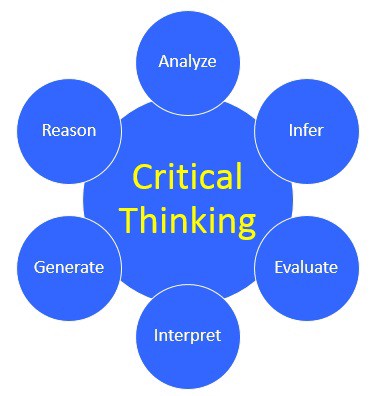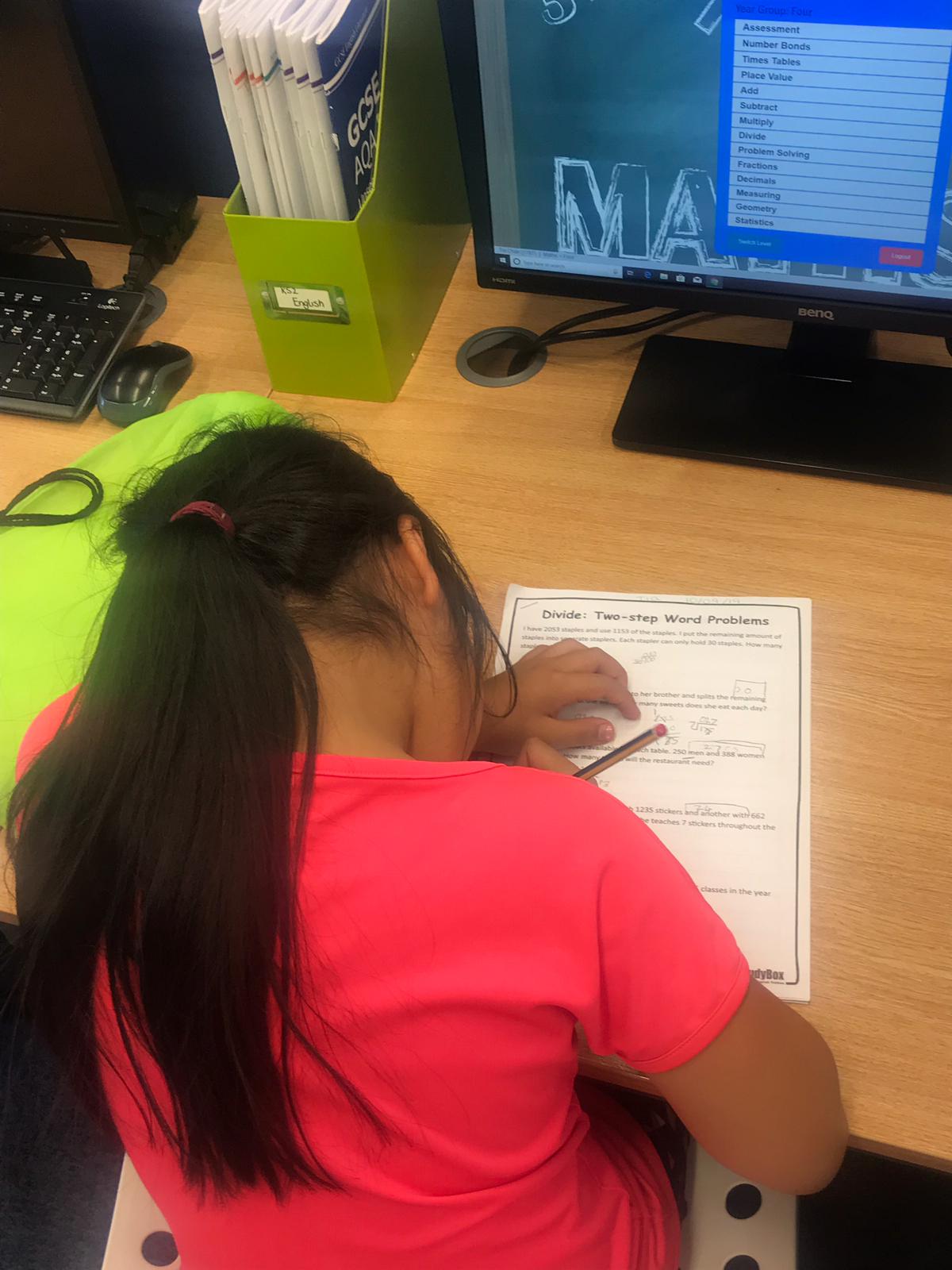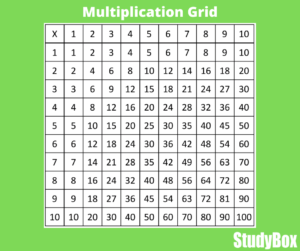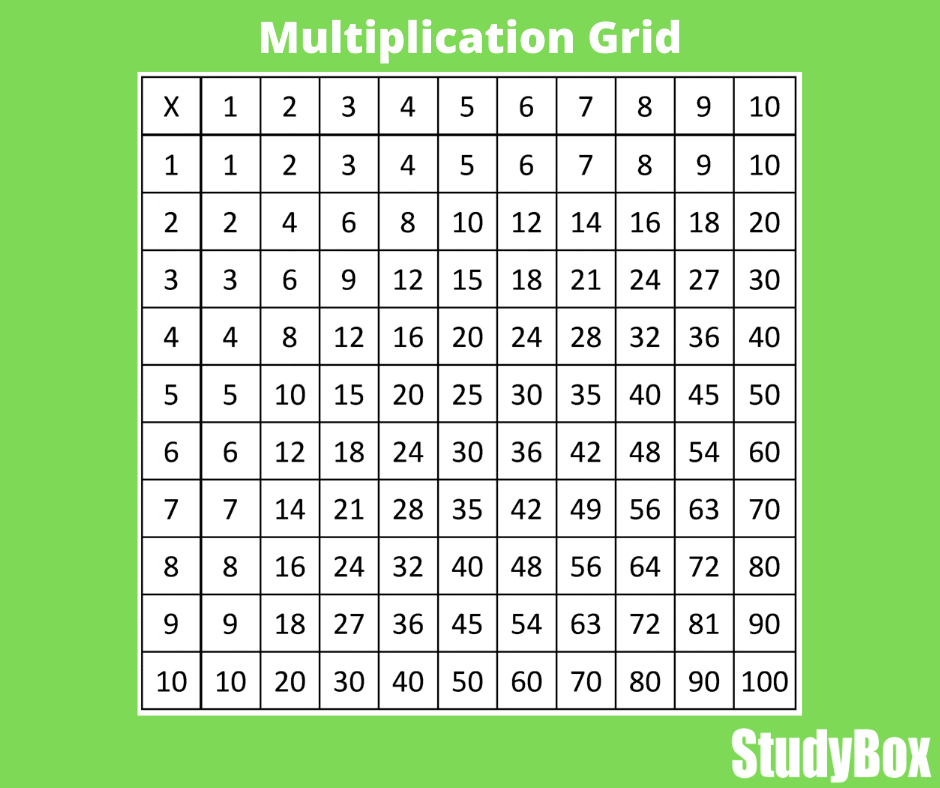Encouraging critical thinking in children

Encouraging critical thinking in children is an important life skill which is beneficial to learn from a young age.
Researcher Ellen Galinsky identifies the ‘Seven Essential Skills Every Child Needs’ in ‘Mind in the Making’ theory. She suggests that ‘to navigate the world, children need to focus, to determine what is important and to pay attention to this, amid many distractions. Focus is one of the essential skills we need to promote in our children.’
Channelling the executive functions of the brain helps us manage our attention, emotions and behaviour, in order to reach our goals. This is why it is useful to introduce critical thinking in children, in order to form concepts and judgements.
‘It is clear that there is information children need to learn – facts, figures, concepts, insights, and understandings. But we have neglected something that is equally essential – children need life skills.’
The 7 Critical Thinking Skills:
Focus and self-control
Blocking out distractions and learning to focus is a skill needed throughout education. This involves focusing on goals and grasping concepts that are taught by focusing undivided attention on what is being taught.
Provide opportunities for play
Figuring out how things work through play. Learning cause and effect, creating different reactions through different modes of play. This is how hands-on learning helps with developing critical thinking.
Pause and wait
Providing time to think and reflect upon the task or activity they are completing. It is important to let children have time to work out solutions for themselves before assisting.
Don’t intervene immediately
Wait and allow time to encourage children to learn for themselves before giving them a hand. This helps them develop executive functioning skills, a range of skills that help with staying focused and self-monitoring.
Ask open-ended questions
Instead of providing the answers to questions children ask, try and help them by asking what they think the answer could be. This aids with critical thinking, as they will learn to become inquisitive and think rationally instead of asking for the answer. Encourage children to think about what they have asked and what they think about it.
Help children develop hypotheses
Inspire learning by encouraging children to investigate further, whether it’s for educational purposes or for reflective thinking. Ask why they’ve come to a certain conclusion, whilst thinking about the learning journey.
Encourage thinking in new and different ways
Innovative thinking helps to develop children’s problem-solving skills. Help them to form their own views and opinions by questioning their processes and methods. Monitoring their learning and thinking of new ways to learn and considering all of the solutions of the learning process will change the way they think, encouraging critical thinking.
Encouraging critical thinking in children helps them to be driven by learning goals. It’s a method that involves using memory to keep a number of different concepts in mind at the same time, whilst paying attention, thinking flexibly and avoiding going on automatic pilot. Through applying all seven executive functions, it allows us to monitor feelings and thinking so we can ‘reflect, analyse, plan and evaluate.’
If you’re interested in Ellen Galinsky’s ‘Seven Essential Skills Every Child Needs,’ read more about it here.
Wondered how to make learning fun for children? Find out more on our blog.
Encouraging creative writing for children

Encouraging creative writing for children has a number of benefits. It improves English and writing skills, spelling, creativity, communication skills, to name a few! It’s also great as a hobby, letting children’s imaginations run wild and write for fun.
According to creativity psychologist, Stephanie Dudek, ‘creativity plays an important role in technological advance, in the social and behavioural sciences, and in the humanities and arts.’
Here are some benefits of creative writing:
Improved reading and writing
Creative writing improves vocabulary, whilst developing children’s unique writing style. They may discover that they prefer writing in one particular genre, or explore many different types of writing! Grammar and spelling also improve with writing practice! The GCSE English Language syllabus involves creative writing, so it’s great preparation for that, too!
“Creative writing aids language development at all levels: grammar, vocabulary, phonology.” (Craik & Lockhart 1972).
Boosting creativity
Creative writing involves making up plots, scenarios and characters, in a way which will intrigue the reader. This stimulates the imagination and widens children’s thought processes, which is applicable to many other subjects! Creative writing can be an escapism for children, allowing their mind to become immersed in an imaginary world.
Self-expression
As well as developing an individual writing style, creative writing also allows children to express their thoughts and feelings in a fictional world. Sometimes children find it difficult to express themselves, or are unsure how to, so writing acts as a safe place to let out emotion.
Improved mental wellbeing
Creative writing has been linked to reducing stress levels by decluttering the mind and controlling emotions. This can boost mood and improve mental wellbeing, through participating in this beneficial and fun extra curricular activity.
Encouraging creative writing for children has numerous educational benefits, as well as being a great stress-relief exercise! It is also great practice for the creative writing English Language GCSE syllabus.
For additional help with English, encourage time for creative writing as a hobby at home! There are many ways to build confidence in English, read our blog on expanding your child’s vocabulary here.
StudyBox also offers after-school tuition in English, sign up here for a free trial! Or chat to one of our friendly tutors on 0203 189 1442 for more information.
Preparing for Mock Exams

Preparing for mock exams is key for achieving those predicted GCSE grades.
Mock exams are good preparation for GCSEs, which are sat during the summer. They predict how well students will do in their GCSE exams.
What are GCSE mock exams?
The mock exams for GCSEs are a way of measuring student’s progress, ahead of the official GCSE exams. They determine which GCSE paper the student will sit and which set they go into. Due to the difficulty of the GCSE exams, as well as the removal of coursework from many subjects, it is a way of measuring how well students are coping.
Why are mock exams important?
- Mock exams are an efficient way of preparing for the GCSE exams next summer.
- It gives students an idea of what to expect, completing tests with realistic crafted GCSE material under timed exam conditions.
- They are also a way of boosting confidence and steering students in the right direction. The mock grades received will inform students and teachers which areas students need that extra boost in, and which topics are going particularly well.
- It is important to treat mocks like the official GCSE exams. This allows students to view their feedback and consequently improve any difficult subject areas way in advance, so they are prepared for GCSEs. It is also great in preparing for mock exams. Establishing a revision routine and working on time management will be beneficial to learn ahead of GCSE revision. For more help on how to revise for GCSEs, click here.

How can students prepare?
- Leave plenty of time to revise. There are multiple topics to cover for every GCSE subject, and only some of the topics revised will appear in the exam. To ensure students are prepared, they must cover as much as the syllabus as possible.
- Know the syllabus. Familiarisation with every topic is vital to ensure students are confident when sitting exams. After all, everything students learn during revision will determine how much they are able to answer.
- Find which learning style works best. Everyone learns differently, whether it’s making revision cards, reciting information aloud or note taking.
- Practice papers. Writing practice papers will give students a feel for what material will come up. Completing these under exam conditions is even better to make it as realistic as possible!
- Additional tuition. Personalised tuition at StudyBox helps children focus on the areas that need improving, in preparation for their mock exams. Our friendly tutors specialise in maths, English and science, providing one-to-one support and go through GCSE past papers.
Interested in additional help for upcoming mock exams? Book a free trial on our website! Or talk to one of our tutors on 0203 189 1442 to find out more.
Learning Times Tables

Learning times tables can be a challenge for children, as there are multiple sequences to learn, from 1 up until 12.
Children start learning times tables in Key Stage 1. Times tables are really important to learn as they are the building blocks of maths; they make division, adding and fractions easier.
Knowing your times tables will come in handy for exams, like GCSEs, SATs and 11+, especially the non-calculator exams!
Here are some ways to make learning times tables that little bit easier:
Colour coding
- Colour code each times tables to make memorising them easier. Why not try matching up the times tables in the same colours that overlap, for example, in the 2 times tables 2 x 8 = 16, in the 8 times tables 8 x 2 = 16. These can both be in red. Learning just one variation, like 3 x 4 = 12, cuts the workload in half, when the equation is flipped it’s the same outcome: 4 x 3 = 12.
Make a times tables grid
- Create a 13 x 13 grid. Put a multiplication symbol in the left corner. Then write numbers 1 to 12 in the left top and bottom columns. You can practice times tables by filling in the squares.
- Alternatively, you can print out a completed grid and display it somewhere visible.

Start off small
- Start off learning the 2 times tables and work your way up.
- This will make it easier learning the bigger ones, once a general pattern is established.
- For example, 2 x 4 = 8, and 4 x 2 = 8. The 2 times tables can be doubled in the 4 times tables.
Make flash cards
- Make times tables flash cards, which can be taken with you everywhere! You can also colour code these.
- Constant repetition and being tested on them will make it easier for the information to be absorbed.
Find what works for you
- Find a learning style that works for you. Some people learn best through constant repetition to retain information, others prefer writing down or reciting information aloud.
Find different patterns
- Try and identify patterns in each time table, to make it easier to learn. The 9 times tables follow a pattern: 9, 18, 27, 36, 45… The units decrease each time as the times tables increase.
- For the 5 times tables, you can simply half 10 times tables, for example, 10 x 4 = 40, double 4 is 8, so 5 x 8 = 40.
- The 7 times tables are the hardest as 7 is a prime number, so the times tables don’t follow a pattern. Knowing that 7 x 7 = 49 makes it simpler, as you can work your way up or down the times tables from this.

Learning times tables is a skill for life. It increases ability and confidence with maths in future, as we use times tables throughout school and into adulthood, too!
Need additional help with times tables? Sign up for a free trial with StudyBox here! Or call the centre to chat to one of our friendly tutors: 0203 189 1442
